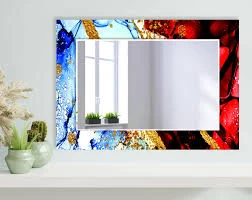

Understanding Frosted Toughened Glass A Comprehensive Overview
Glass has long been celebrated for its versatility and aesthetic appeal in architecture and design. Among the various types of glass available today, frosted toughened glass stands out due to its unique properties and wide range of applications. This article explores the attributes, advantages, manufacturing process, and uses of frosted toughened glass, providing a detailed perspective on this remarkable material.
What is Frosted Toughened Glass?
Frosted toughened glass is a type of safety glass that has been treated to enhance its strength while also featuring a frosted or textured surface. The frosted finish is typically achieved through sandblasting or acid etching, which gives the glass a translucent appearance, allowing light to enter while obscuring visibility. This combination of properties makes it an excellent choice for both functional and decorative applications.
Properties and Advantages
1. Safety and Durability Toughened glass undergoes a special heating and cooling process, known as tempering, which increases its resistance to impact and temperature changes. If broken, it shatters into small, blunt pieces rather than sharp shards, minimizing the risk of injury.
2. Aesthetic Appeal The frosted finish creates a soft, elegant look, making it a popular choice in modern interior design and architecture. It can add a touch of sophistication to spaces without compromising natural light.
3. Privacy One of the primary advantages of frosted glass is its ability to provide privacy without sacrificing light. This makes it ideal for applications in bathrooms, offices, or any setting where visual barriers are desired.
4. UV Protection Frosted toughened glass can help protect interiors from harmful ultraviolet (UV) rays, which can cause fading of furniture and décor over time.
5. Easy Maintenance The smooth surface of frosted glass makes it relatively easy to clean, requiring only basic maintenance to keep it looking pristine.
Manufacturing Process
The production of frosted toughened glass involves several key steps
1. Cutting The glass is first cut to the desired size and shape.

2. Tempering The cut glass is then subjected to high temperatures (about 620°C) and rapidly cooled. This process not only reinforces the glass but also prepares it for the next step.
3. Frosting Once the glass has been tempered, it is treated to create the frosted effect. This can be achieved through various methods, such as sandblasting or applying a chemical solution to etch the surface. The result is a finely textured finish that diffuses light beautifully.
4. Finishing After frosting, the glass may undergo additional treatments to enhance its performance or aesthetics, such as anti-reflective coatings or colored finishes.
Applications
Frosted toughened glass is versatile and can be used in numerous applications
1. Architectural Uses Commonly found in office partitions, conference room doors, and exterior facades, frosted glass allows for light penetration while maintaining privacy and reducing distractions in work environments.
2. Bathroom Installations It is frequently used in shower doors, bathroom windows, and privacy screens, providing the necessary seclusion in wet spaces without sacrificing light.
3. Furniture and Décor Designers often incorporate frosted toughened glass in tabletops, cabinetry, and decorative panels, adding an elegant touch to residential and commercial spaces.
4. Interior Design The soft glow of frosted glass can enhance ambient lighting, making it an excellent choice for light fixtures, lampshades, and decorative accents.
5. Safety Railings In some contexts, frosted toughened glass is used to create safety railings that are both secure and visually appealing.
Conclusion
Frosted toughened glass is a remarkable material that combines safety, aesthetics, and functionality. Its unique properties make it a popular choice across various industries, from architecture to interior design. By understanding its advantages and applications, builders, designers, and homeowners can make informed decisions that enhance both the beauty and safety of their environments. As technology continues to advance, the possibilities for frosted toughened glass will likely expand, offering even more innovative solutions for modern living and working spaces.